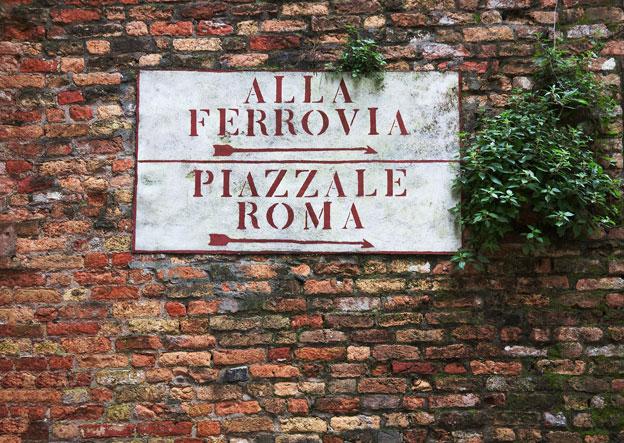If you enjoy exploring Italy on your own, it’s a good idea to learn a few basic questions to help you if you get lost, or to assist you in getting to where you want to go. A little understanding of the language will not only enable you to ask for directions, but also understand the answers you are given.
To attract someone’s attention it is considered polite to say, Mi scusi or simply, Scusi, meaning, "excuse me".
An important word when asking for directions is, Dove, meaning "where".
To ask, "where is……?", you simply lose the "e" at the end of the word and add "è" meaning, "is", so the question will begin: Dov’è……?
So if you wanted directions to the sports stadium, you’d ask:
Dov’è il campo sportivo? - Where is the sports stadium?
If you cannot locate a street sign and wish to get your bearings, you can ask:
E' questa via Roma? - Is this Rome Street?
Another helpful phrase is:
Dove siamo adesso? - Where are we now?
It’s not a good idea to practice a few questions if you don’t understand the responses you get, so here are a few replies to memorise.
Sempre dritto - Straight on
Vada/Vai sempre dritto - when prefixed with, vada (formal) or vai (informal) it means, You go straight on.
Segua/segui la strada - follow the road
or
Segua/segui questa strada - follow this road.
Let’s imagine you have asked for directions to Piazza Umberto:
Mi scusi, dov’è Piazza Umberto, per favore? and the response you receive is, "Sempre dritto poi dopo il supermercato giri a sinistra", Straight on and after the supermarket turn left.
You can see that although the instruction is quite simple, it is important that you memorise or carry a list of useful words.
Some useful words to commit to memory:
Nord – North.
Sud – South.
Est – East.
Ovest –West
Destra – Right
Sinistra – Left
Vicino – near/next to
Davanti – In front of
Sotto – Under
Sopra – Over
Prima – Before
Dopo - After
By committing these few words to memory means you will understand the following reactions to your questions.
È sotto il ponte – It’s under the bridge.
La piazza è dietro alla posta – The square is behind the post office.
È vicino al campo sportivo – It’s near the sports stadium.
Gira a destra dietro l'angolo – Turn right around the corner.
Brindisi è a sud-est – Brindisi is in the south-east.
La banca è prima del supermercato – The bank is before the supermarket.
Finally the words, via and strada, both mean street or road, but you use via with the specific street name and strada in general terms.
Dov’è via Napoli? – Where is Naples Street?
Una strada breve – A short road.
Hopefully you won’t get lost, but if you do, at least with these simple questions, you can easily get back on track.









